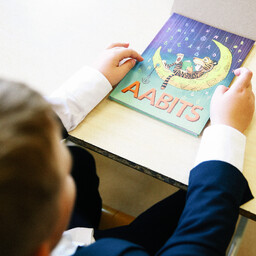Alongside singing, mathematics is the favorite subject of primary school students at Kohtla-Järve Ahtme School. The numbers are the same in both Estonian and Russian. Informatics was also named as one of the favorites.
Student Maija Ravlussevitš said that it was a bit difficult after coming to school from kindergarten. The Estonian words had been forgotten over the summer, but at school, everything was beautifully recalled.
According to first-grade teacher Heli Lebedeva, children are coming to school with increasingly better Estonian language skills. "Kindergartens are doing a good job - year after year, children come from there who can speak Estonian at a better level. So big applause to kindergartens," said Lebedeva.
According to teacher Katrin Veber, the attitude towards the Estonian language has become more positive over time. "The parents of my class are open and they want their children to master the language, and they themselves also try to speak Estonian with me, and some speak Estonian completely fluently," said Veber.
According to Veber, children are also better understanding the need for the Estonian language. "There is no longer an attitude of 'I don't speak it'. Rather, it's 'yes, I want to speak it, I need it, I live in this country and this language is important to me'," said Veber.
Complaints have been heard that there is a lack of methodological materials for teaching non-Estonian children in Estonian. According to Lebedeva, everything depends primarily on the teacher. "Currently, the methodological material is the teacher themselves. The teacher who dances, the teacher who speaks, the teacher who speaks, draws, writes, and does it all with the children. Interactive tools would definitely be needed, they help and the children like them. It would help develop them better," said Lebedeva.

